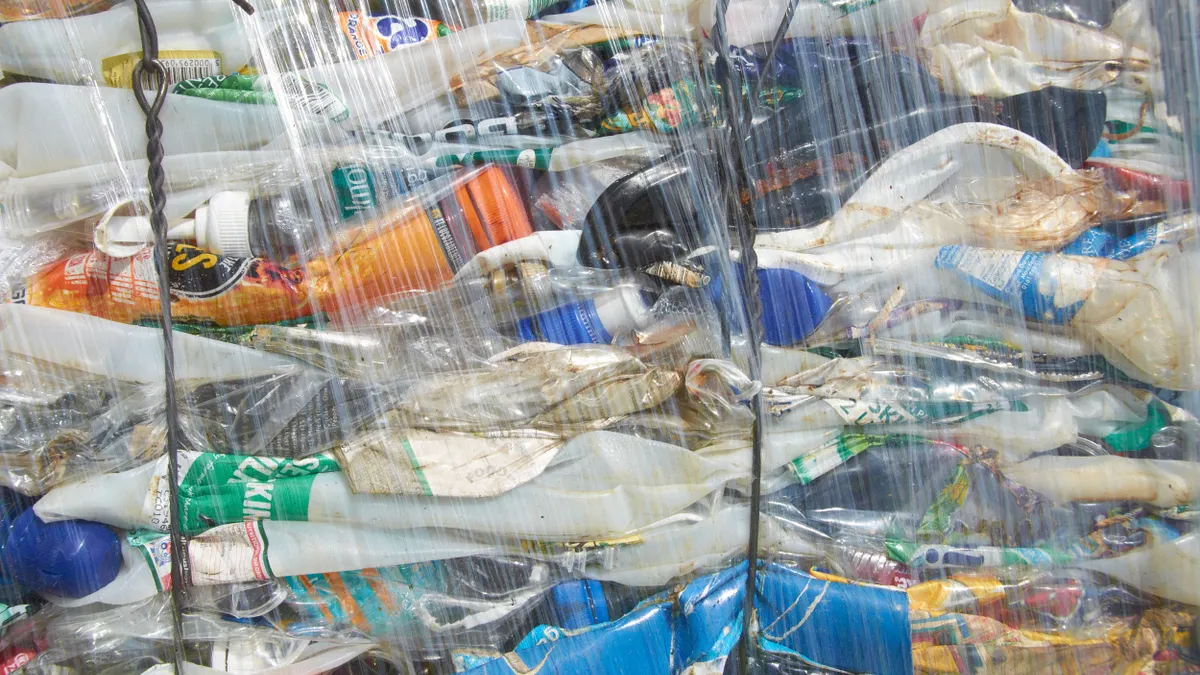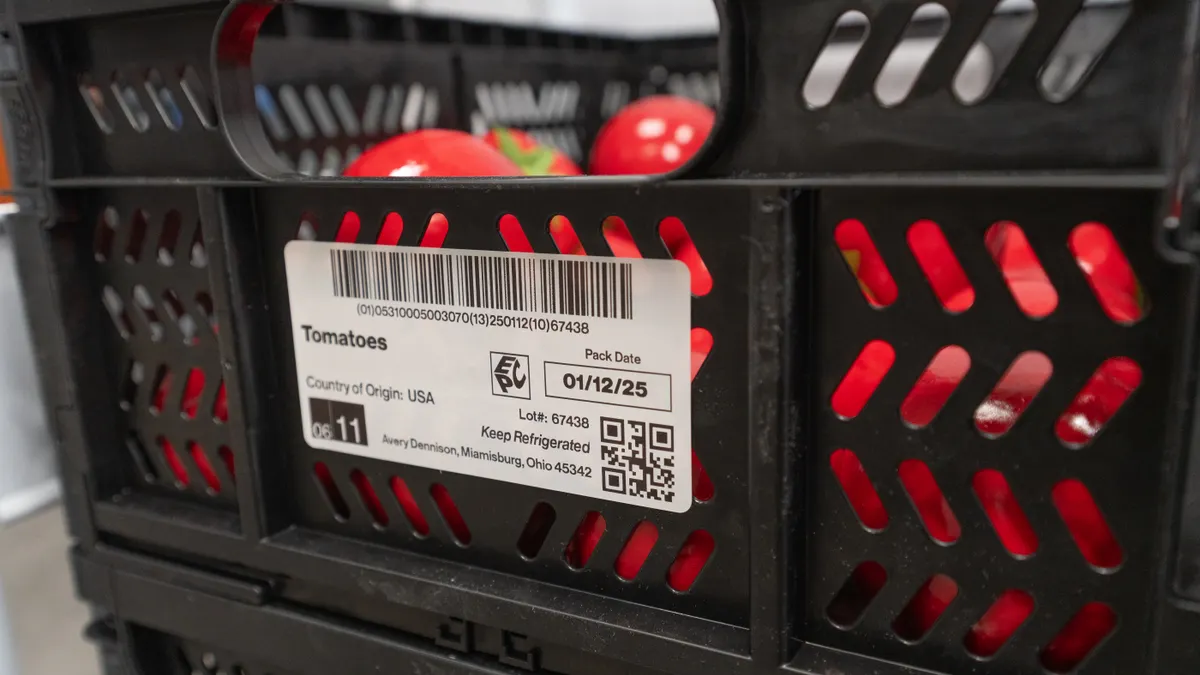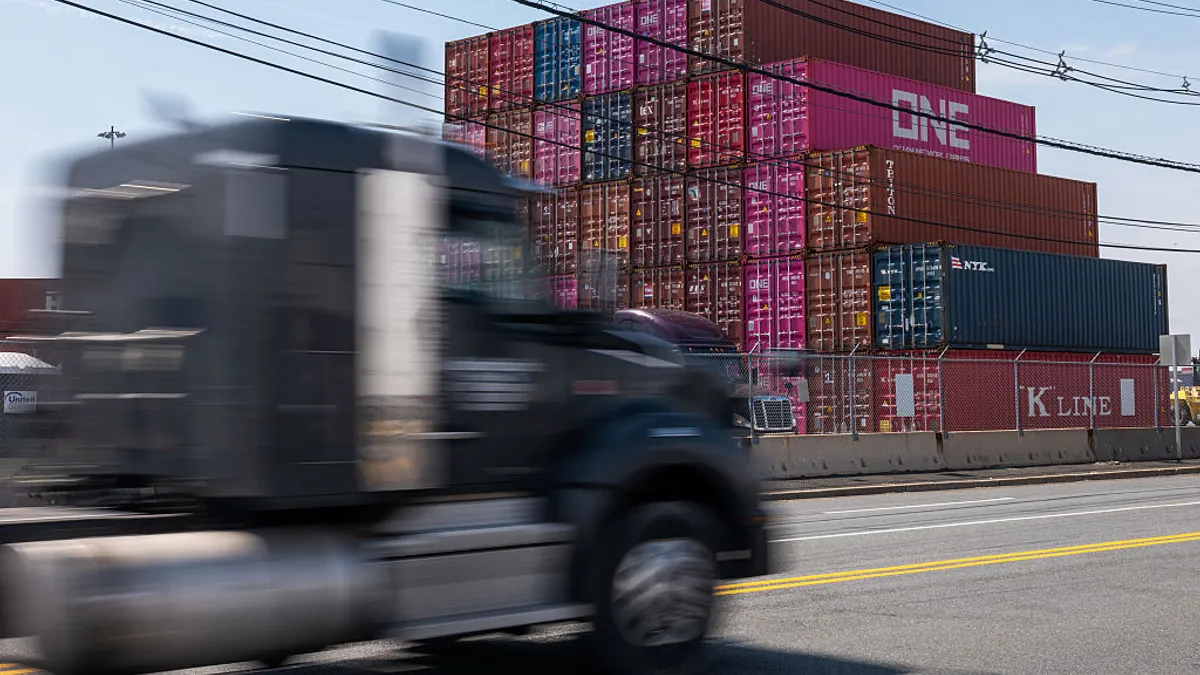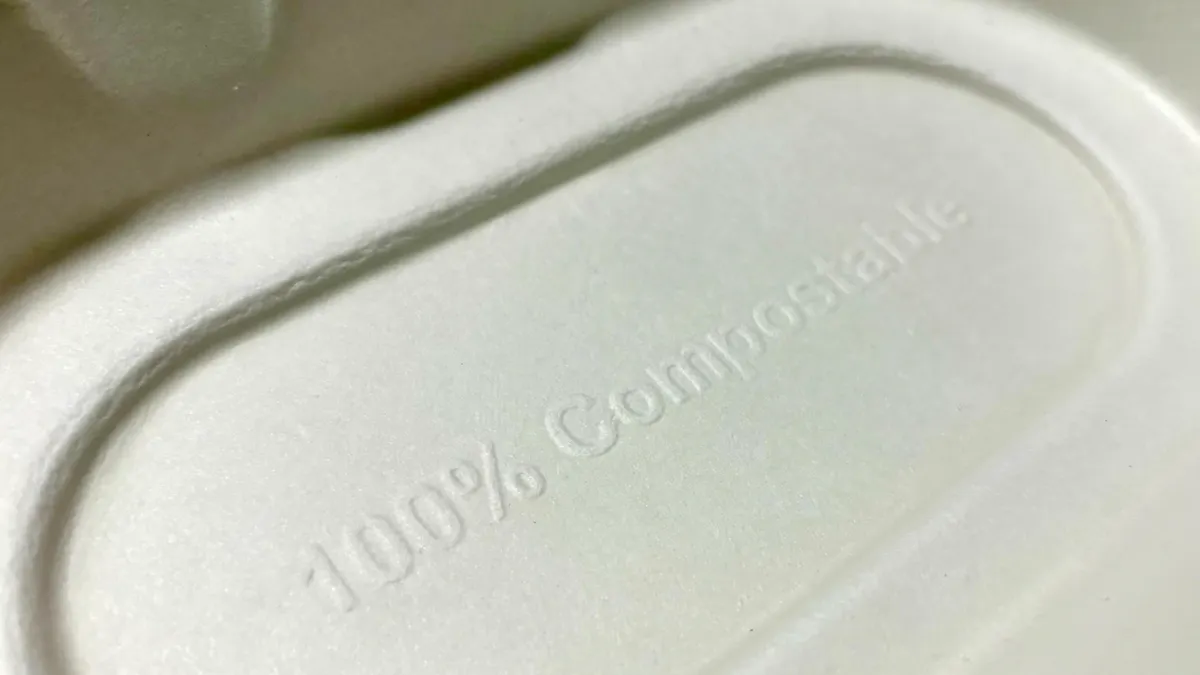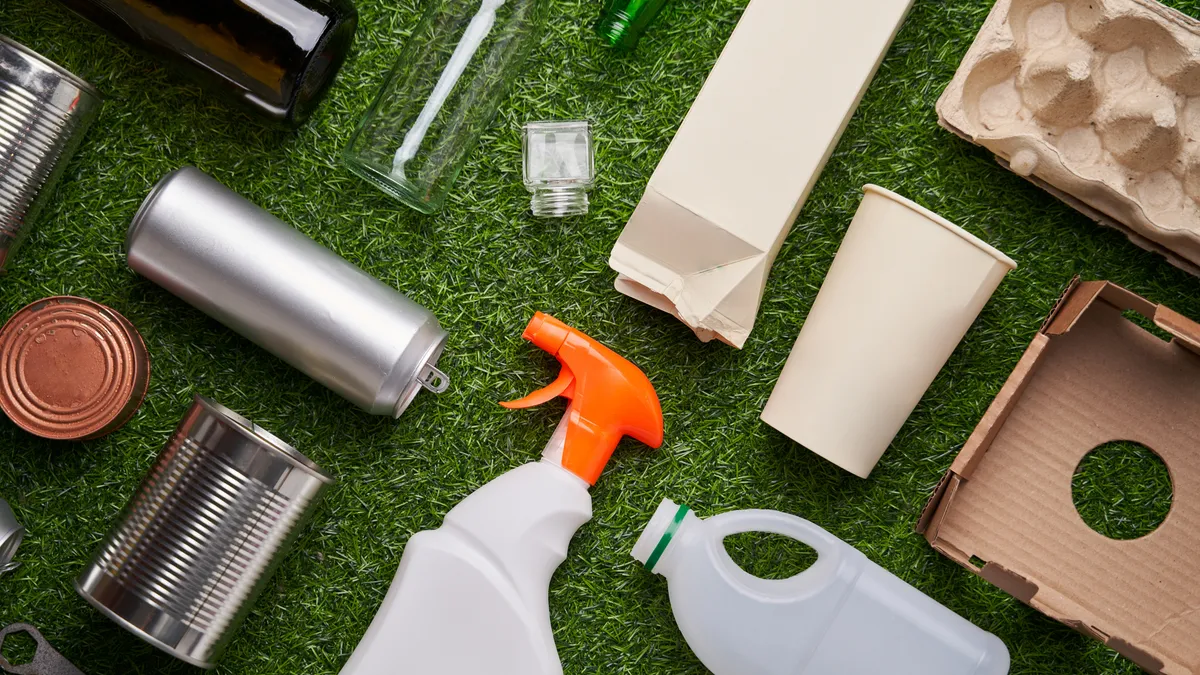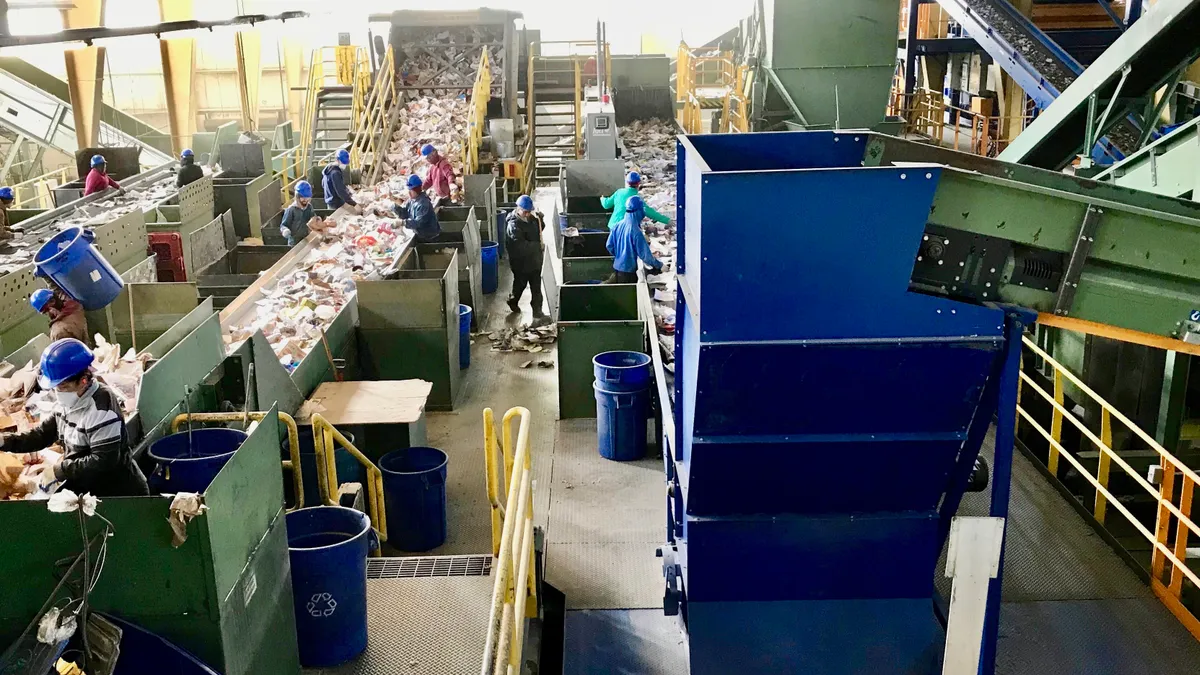Creating stronger markets for recycled materials is a key goal baked into the bedrock of many extended producer responsibility for packaging laws, but industry stakeholders say it's hard to tell how much EPR alone will move the needle on recycled content use.
Seven states so far have passed EPR for packaging laws. Separately, California, Washington, New Jersey, Connecticut and Maine also have standalone recycled content mandates, signed between 2020 and 2023, that are not part of EPR programs.
Washington’s EPR law explicitly references its earlier postconsumer recycled content mandates when setting new targets for materials not covered by the mandate. While in California the overlap of several different labeling laws, diversion mandates and PCR requirements have raised concerns.
Kate Bailey, chief policy officer at the Association of Plastic Recyclers, said that while it’s necessary to talk about recycled content as part of EPR, it’s also important to be clear about what issues each piece of legislation intends to address.
“EPR really is all about funding the collection system and improving the collection system,” she said, and while market dynamics are part of that, they’re not the central focus. APR does support including recycled content in EPR programs, to improve material quality, but Bailey said there are challenges around ensuring compliance, as most targets are collective.
“There are a lot of companies doing the right thing and a lot of companies that don’t buy anything,” she said, pointing to the fines levied in Washington under its PCR content mandate.
Policy mechanisms need to be included that ensure participation, Bailey said, and that’s often more achievable in standalone mandates.
Yet consultant Michael Washburn said he hasn’t seen much evidence that the standalone laws “have driven any meaningful shift in the market,” as they only address one small part of the process.
However, as part of an EPR program, which simultaneously puts in place drivers to increase collection, improve material quality and upgrade infrastructure, “that kind of holistic approach strikes me as an approach that offers some promise,” he said.
Colorado case study
Colorado’s EPR law sets specific postconsumer recycled content minimums that differ by material type — glass, resins, metal and paper.
The law calls for rigid plastic packaging to contain 20% PCR by 2030, while flexible plastic packaging should have 5% by the same deadline. Paper and paper packaging are required to have 40% recycled content, metal packaging is required to have 40% and glass is required to have 30%. The goals are collective, not individual producer targets.
Wolf Kray, materials management unit leader at the Colorado Department of Public Health and Environment, said recycled content is measured in a company’s national portfolio, which ideally will create a bigger impact than only looking at PCR used in packaging within the state.
“There's a long way to go and there are definitely some lofty goals, but that’s the hope for EPR,” he said. “That this will help drive changes, capture more material and get it back into the marketplace.”
However, the question of how to verify chemically recycled plastic content has been the subject of hours of discussion among members of the state’s packaging EPR advisory board.
Starting at a March board meeting, members flagged concerns about the “free allocation” method of mass balance, a way of counting recycled material as an average. It allows a manufacturer to “assign” recycled content across its product portfolio — not necessarily to the products it’s physically in.
At a subsequent workgroup meeting, Gaultier Massip, ecodesign project manager at French producer responsibility organization Citeo, explained that under the French EPR system producers have always been required to certify that they can trace recycled material from processor to packaging manufacturer. But up until 2024, third-party certification was only needed at the recycler level, while self-certification could be done at the converter level.
“It was quite light, to be honest,” Massip said of the self-certification. In 2024, Citeo decided on a more “binding and transparent system” by requiring third-party certification at both levels. Massip added that while mass balance is not permitted today, it likely will be allowed in 2026, and "there is a real need for transparency on this highly debated [method]."
The board continued to wrestle with the topic. Those concerns led CHPHE and the state attorney general’s office to dig deeper, with possible further regulatory action to come.
Kray said “we’re doing our homework here and trying to understand all the options as well as we can,” because there “are various methodologies out there and it’s important to understand the nuances of each.”
“It’s very much a new thing for us that’s certainly outside the scope of the traditional regulatory background of the solid waste and recycling world,” Kray said. “It’s definitely more something folks in the packaging industry are familiar with, so we’re catching up.”
Bailey said while verification of fuel exemption is an important discussion to have, it's not one that has an approaching deadline. Chemical recycling is not yet operating at a scale that makes it a true player in the recycled content market, so the question of how to verify it doesn't need to be resolved immediately.
“Brands will find the cheapest way to use recycled content and, right now, economics point to mechanical recycling,” she said, adding that “I just don't see that changing” in the near future.
Changing markets
Projected demand for recycled content looks to outpace capacity in the United States. Washburn noted the persistent “mismatch” in PCR markets, given that markets are national while commodities are typically more regional.
“How does the collection of certain resins match up with the processing capacity, match up with the manufacturing sites where that material would be taken up, and the cost dynamics?” he said.
For those reasons, he doesn't think increased PCR use is going to substantially contribute to plastic source reduction, even though including recycled content targets in EPR laws will be “a net positive” for increasing PCR availability and uptake.
Washburn added that he thinks recycled content incentives are more appropriate than targets. “Sometimes it will work and sometimes it won't, and that's okay.”
“We have to be realistic about what we think we can do on this issue through EPR policy alone,” he added.
Bailey said she’s seen standalone state policies work, such as California’s rigid plastic program that was created in the 1990s to establish HDPE recycling and the more recent recycled content mandates for trash bags. She pointed to a 2024 study from the University of California, Berkeley that found the most impactful policy to reduce plastic pollution is requiring the use of more recycled content.
“I think we've hit a good stride with recycled content in beverage containers and PET, but we've hit a major obstacle in that companies are now buying overseas instead of buying from the U.S.,” she said.
Bailey said policies need to be refined to specify or incentivize recycled content from North American markets, and other solutions should also be considered, such as giving companies a tax credit if they buy recycled content.
“How do we get to the longer-term goal of recycled content as the default? How do we make that paradigm shift?” she said. “It’s not just going to be through recycled content policies.”

